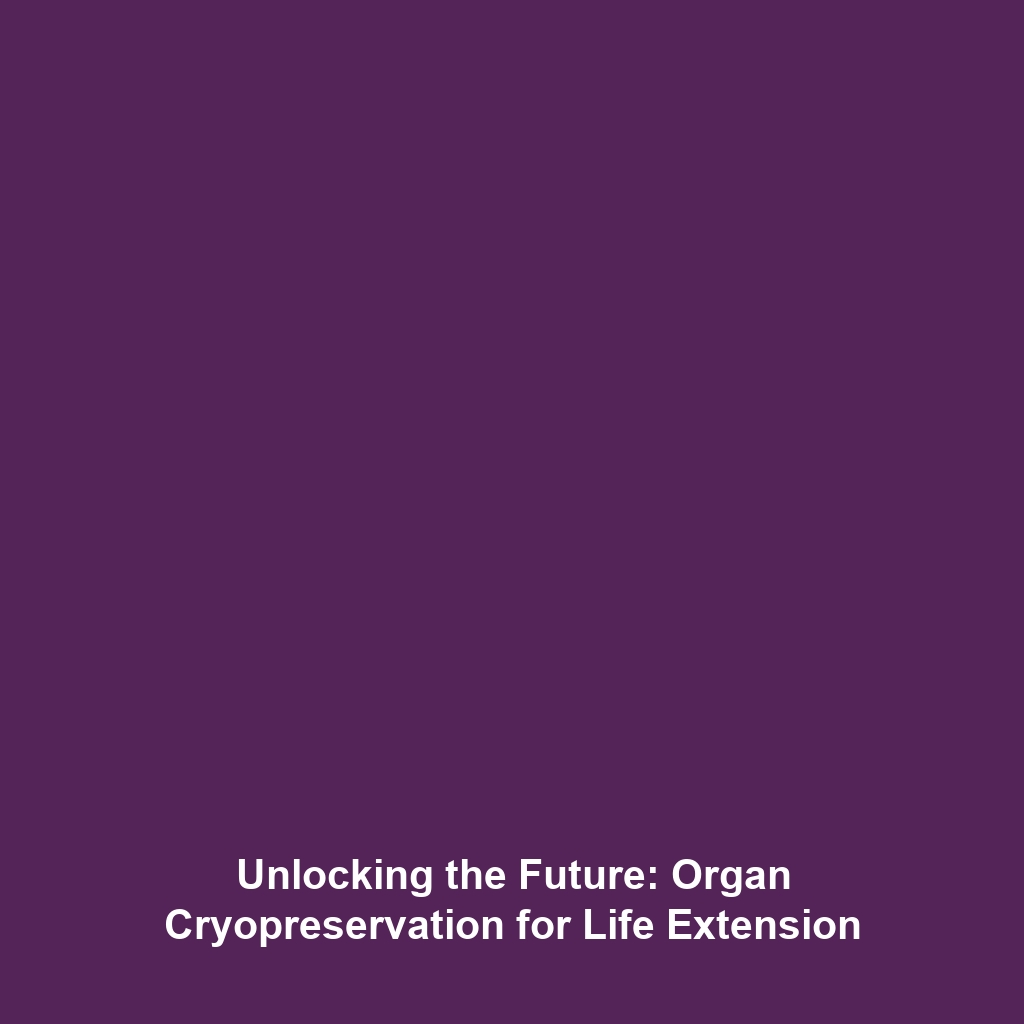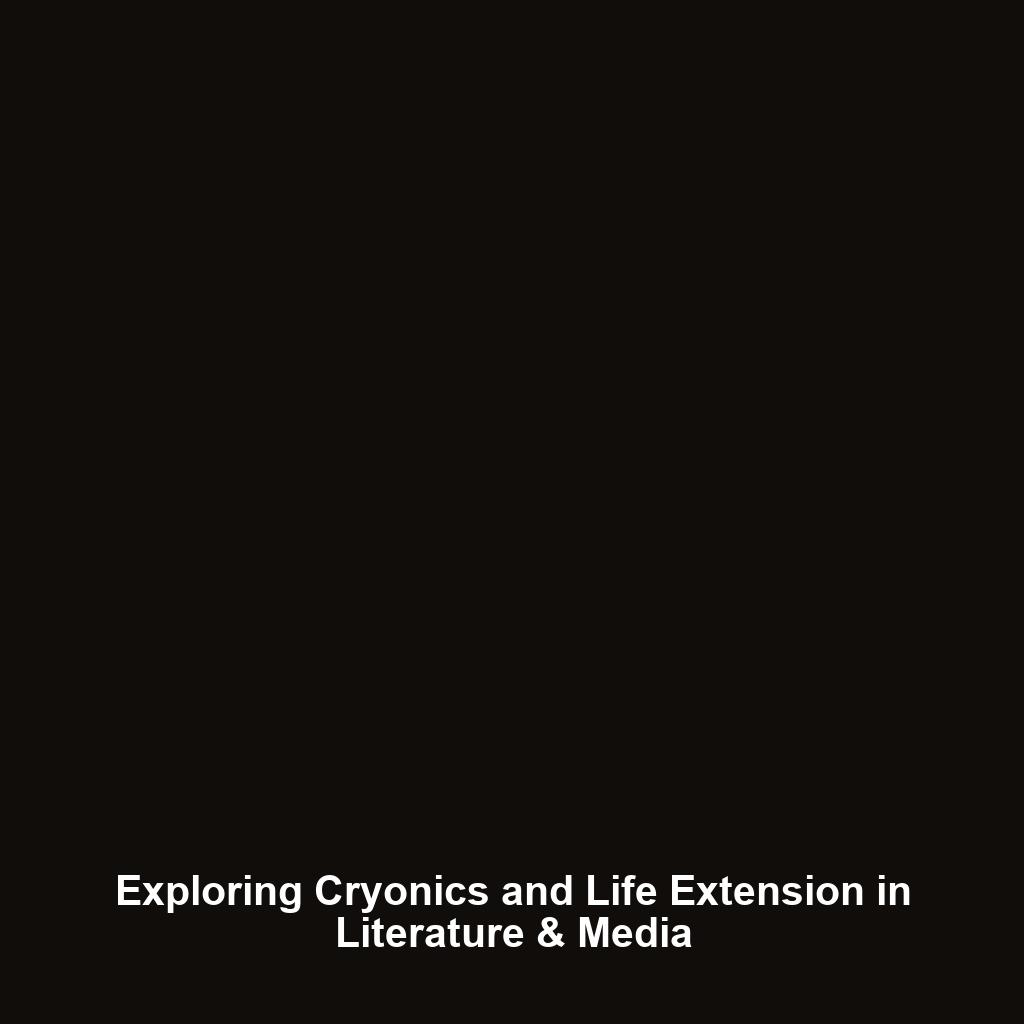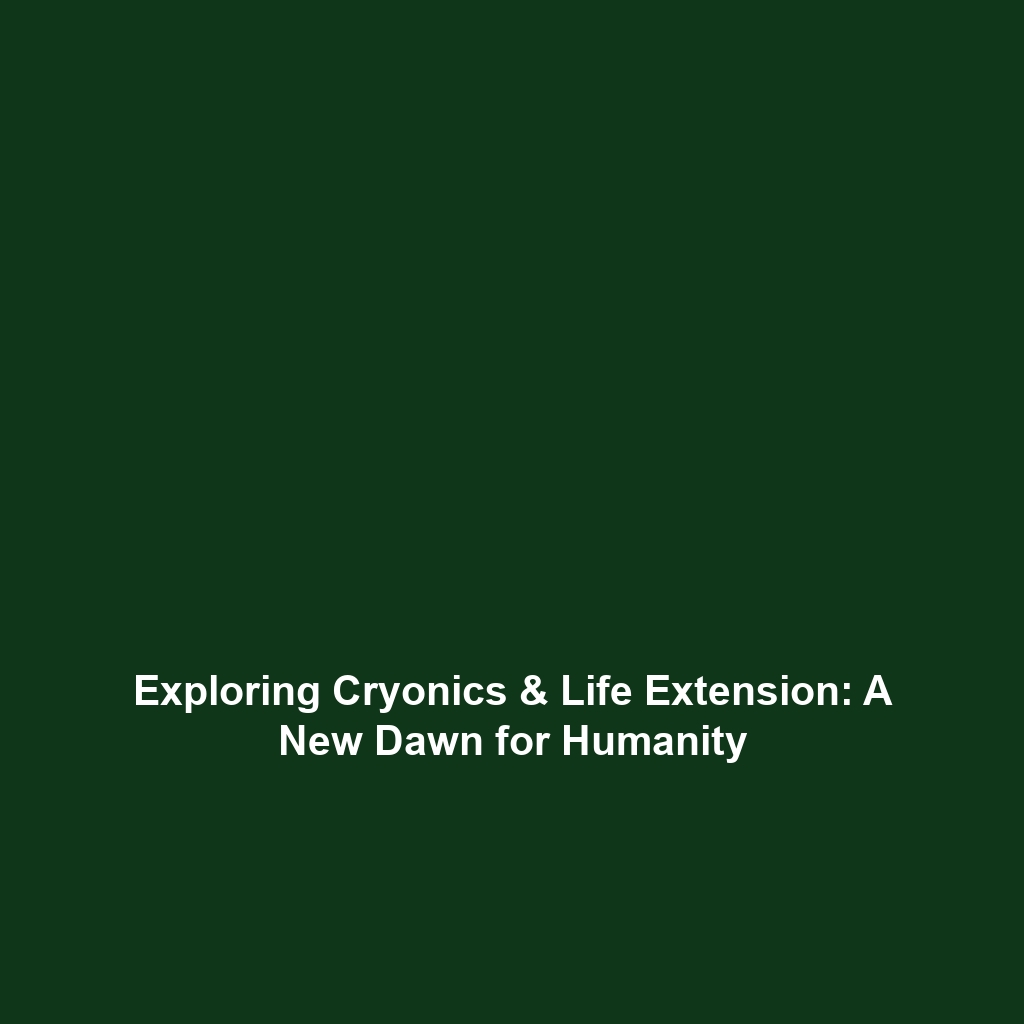Organ Cryopreservation: A Breakthrough in Cryonics & Life Extension
Introduction
Organ Cryopreservation is an innovative technique with significant implications for the fields of Cryonics and Life Extension. By freezing human organs at extremely low temperatures, this process offers a potential solution for extending the viability of organs for transplantation and preserving biological materials for future medical advancements. This emerging technology not only opens doors for enhancing organ donation but also aligns closely with the broader pursuit of extending human life beyond natural limits.
Key Concepts of Organ Cryopreservation
Understanding Organ Cryopreservation involves several key concepts and principles:
- Cryoprotectants: Substances used to prevent ice crystal formation during the freezing process, ensuring cellular integrity is maintained.
- Vitrification: A technique where biological materials are cooled rapidly to form a glass-like state, avoiding the damage associated with ice formation.
- Storage Conditions: The requirements for maintaining frozen organs, including temperature control and monitoring.
These concepts highlight how Organ Cryopreservation integrates with the life extension ethos, providing a framework for developing advanced preservation methods that could one day allow for rejuvenating organs for transplantation.
Applications and Real-World Uses
Organ Cryopreservation has several notable applications relevant to Cryonics and Life Extension:
- Transplantation: Organs preserved through cryopreservation can be stored for extended periods, increasing the chances of successful transplants.
- Research Purposes: Cryopreserved organs allow scientists to study organ behaviors and response under various conditions without the immediate need for fresh specimens.
- Life Extension Strategies: As cryopreservation techniques improve, scientists are exploring their potential to preserve organs for future rejuvenation therapies.
These practical uses illustrate how Organ Cryopreservation is pivotal in advancing the goals of Cryonics and extending human lifespan.
Current Challenges
Despite its promise, Organ Cryopreservation faces several challenges:
- Variable Success Rates: Not all organs respond equally well to cryopreservation, which raises concerns about their viability post-thaw.
- Complexity of Procedures: The processes involved can be intricate and require highly specialized equipment and knowledge.
- Ethical and Regulatory Issues: The use of human organs for cryopreservation raises bioethical questions that must be addressed within the regulatory framework.
These challenges underscore the need for ongoing research to improve techniques and address the ethical implications within Cryonics and Life Extension.
Future Research and Innovations
Future research in Organ Cryopreservation promises to bring forth several innovative breakthroughs:
- Next-Generation Cryoprotectants: Development of advanced cryoprotective agents that minimize toxicity and improve recovery rates.
- Artificial Intelligence Applications: Utilizing AI for optimizing cryopreservation protocols and predicting outcomes based on historical data.
- Integration with Regenerative Medicine: Exploring synergies between cryopreservation and regenerative techniques to enhance organ recovery and rejuvenation methods.
These innovations signify a promising future for Organ Cryopreservation, presenting an avenue for significant advancements in Cryonics and Life Extension.
Conclusion
Organ Cryopreservation stands at the forefront of Cryonics and Life Extension, representing both significant challenges and immense potential. By improving our understanding and techniques in this area, we aim to unlock new possibilities for organ transplantation and longevity. For those interested in exploring more about this topic, consider reading our articles on advanced cryonics techniques and ethical considerations in life extension.








